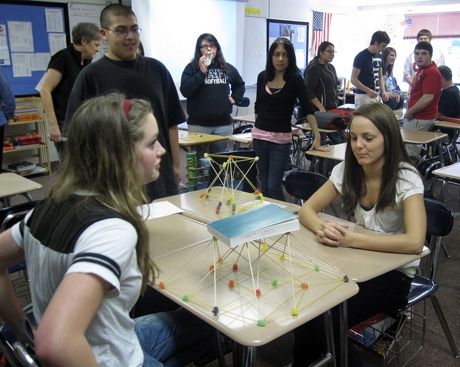Introduction:
In today’s fast-paced, ever-changing world, educators are embracing new approaches to teaching that cater to diverse learners. One such innovative approach gaining traction is project-based learning (PBL). This article highlights the transformative impact of PBL on classroom dynamics and student outcomes at Lincoln Elementary School.
The Beginning of PBL in Lincoln Elementary:
Mrs. Johnson, a dedicated sixth-grade teacher at Lincoln Elementary School, wanted to reinvigorate her teaching methods to better engage with her students. After attending a conference on modern pedagogy, she incorporated project-based learning into her curriculum and observed how it transformed her classroom dynamics.
Collaboration and Communication:
Before PBL was implemented in Mrs. Johnson’s class, students followed traditional lecture-based instruction. However, this approach often left many of her students unengaged and disinterested. With the introduction of PBL, students worked together in groups on real-world projects related to their curriculum.
As they collaborated and communicated with one another during these projects, the classroom environment became more interactive and dynamic. Students were encouraged to share ideas freely and engage in constructive debates while refining their projects. This enhanced communication led to improved relationships between students themselves and between students and the teacher.
Critical Thinking and Problem Solving:
PBL required students to actively engage with unfamiliar challenges posed by real-world situations as they completed their projects. This required them to analyze information from diverse sources and apply skills such as critical thinking and problem-solving. As a result, Lincoln Elementary school saw an increase in students’ fluency in complex topics such as climate change, social justice issues, and local community development.
Ownership of Learning:
Project-based learning empowers students to take charge of their learning journey by allowing them control it at their own pace. In Mrs. Johnson’s classroom, each student-led project provided opportunities for individual growth tailored to their unique needs and interests.
Improved Academic Performance:
Mrs. Johnson observed a noticeable improvement in her students’ academic achievement as a result of implementing PBL. Students scored higher on tests, displayed better retention of material, and developed stronger foundational skills across multiple subject areas. By giving students a sense of ownership over their own learning, they became more invested in their academic success.
Conclusion:
Project-based learning transformed the classroom environment at Lincoln Elementary School, promoting healthy collaboration amongst students while cultivating vital skills such as critical thinking and problem-solving. The positive impact PBL had on student engagement and academic performance made it an ideal approach to modern education. Mrs. Johnson’s successful adaptation of PBL within her classroom serves as an inspiration to educators seeking to embrace similar innovative teaching methods.





